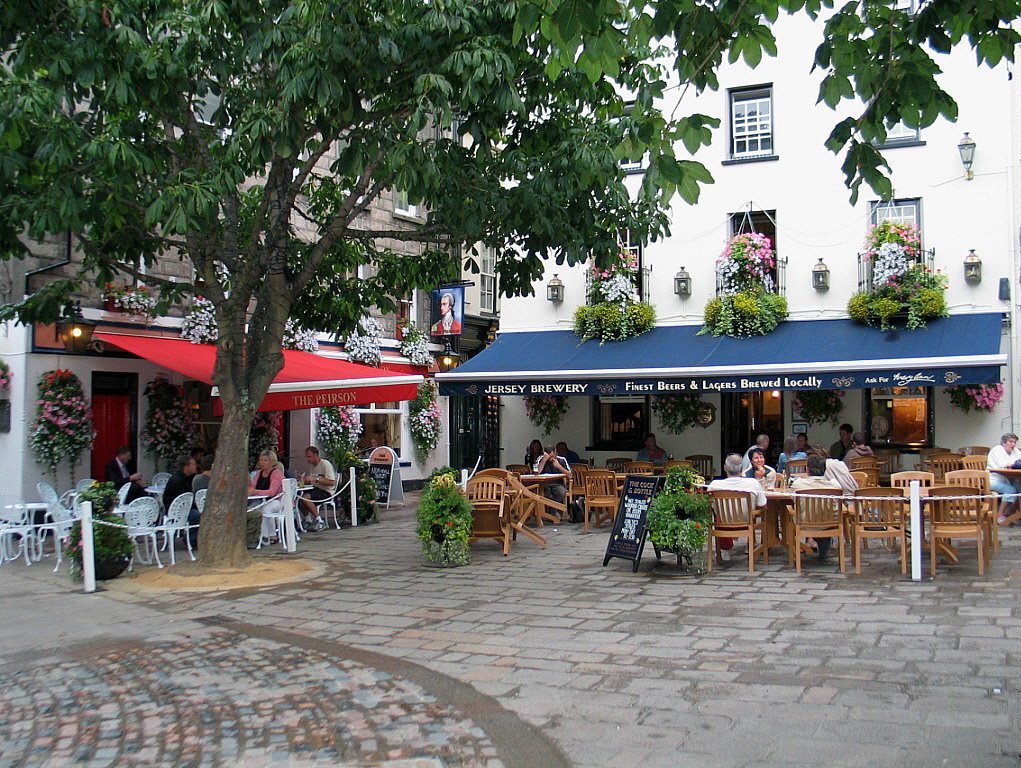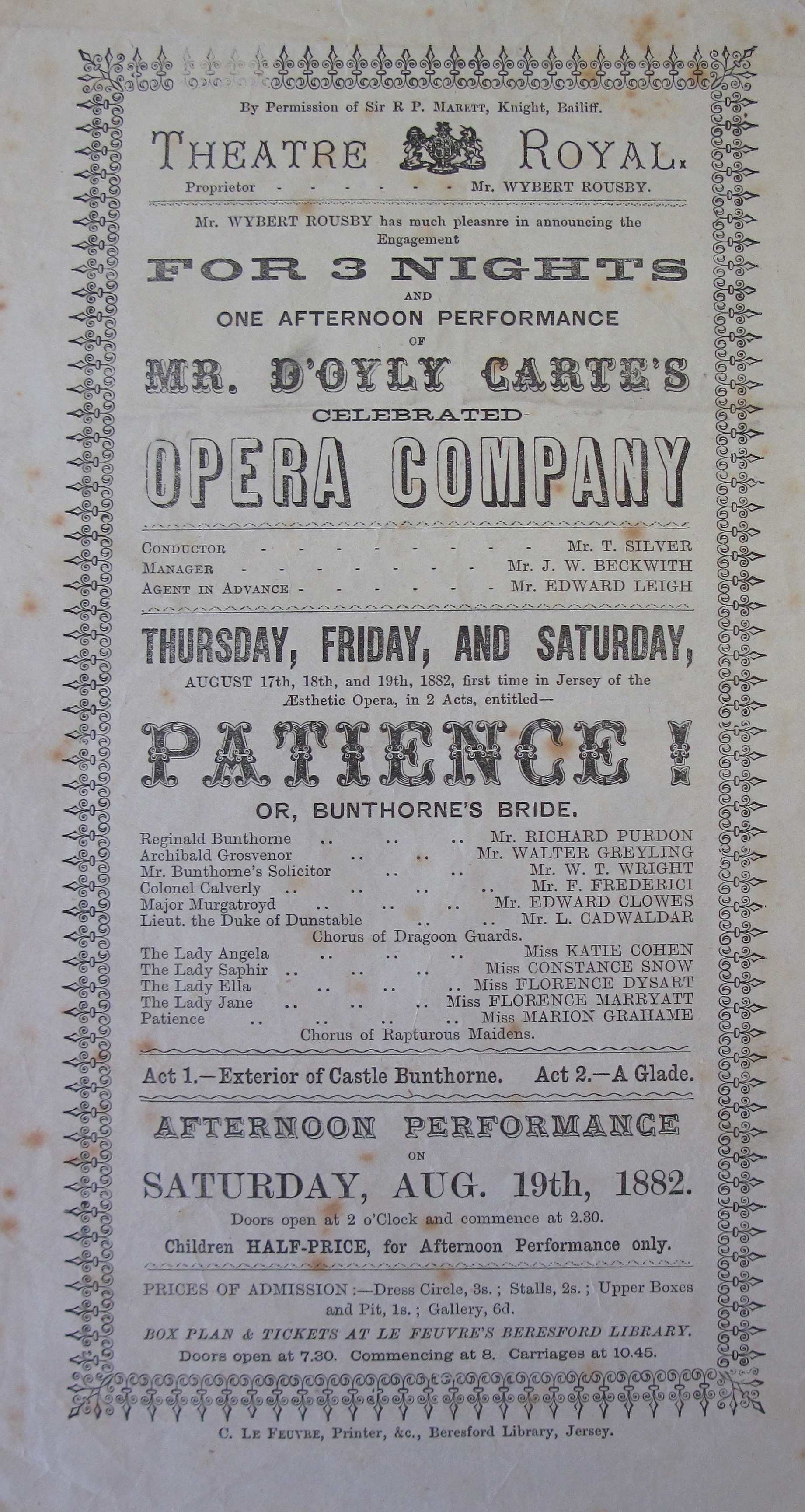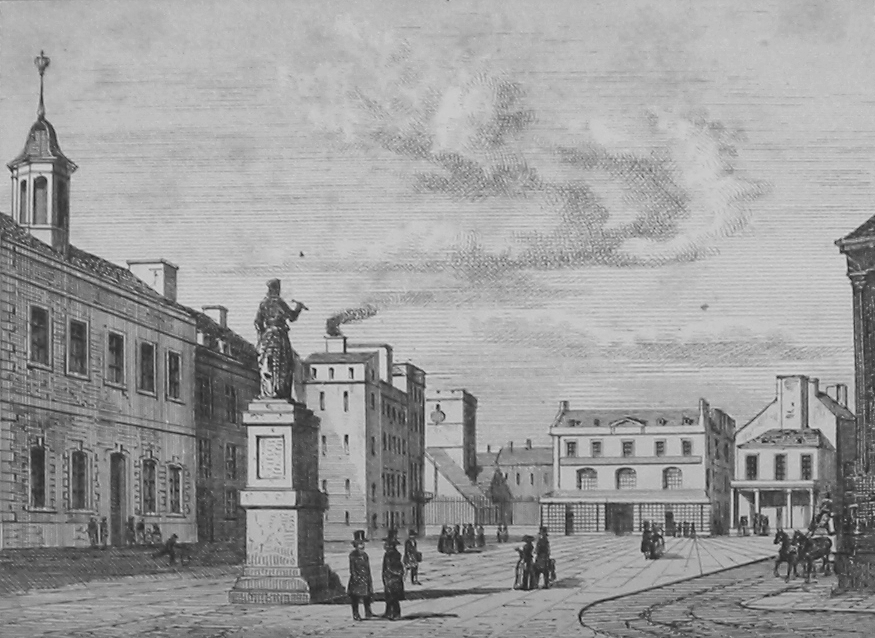|
Vingtaine De La Ville
The Vingtaine de la Ville is one of the six vingtaines of Saint Helier in Jersey, and roughly corresponds to the historic town centre and harbours. It is divided into two cantons: * Canton de Bas de la Vingtaine de la Ville * Canton de Haut de la Vingtaine de la Ville The Vingtaine de la Ville maintains an autonomous financial existence, unlike other vingtaines in Jersey, thanks to an endowment which has its origins in the purchase of Le Mont de la Ville by the British government in 1804. Formerly, Le Mont de la Ville, a craggy plateau overlooking the town of St. Helier, was topped by open common land used for grazing and rabbit hunting. In 1785 part of the plateau was levelled as a parade ground, which led to the discovery of a dolmen which the vingtaine presented to the Governor of Jersey, General Henry Seymour Conway (later Field Marshal), who subsequently transported it to his estate at Henley-on-Thames where it was re-erected. As it is now a listed monument in the United K ... [...More Info...] [...Related Items...] OR: [Wikipedia] [Google] [Baidu] |
Victor Hugo
Victor-Marie Hugo, vicomte Hugo (; 26 February 1802 – 22 May 1885) was a French Romanticism, Romantic author, poet, essayist, playwright, journalist, human rights activist and politician. His most famous works are the novels ''The Hunchback of Notre-Dame'' (1831) and ''Les Misérables'' (1862). In France, Hugo is renowned for his poetry collections, such as and (''The Legend of the Ages''). Hugo was at the forefront of the Romanticism, Romantic literary movement with his play ''Cromwell (play), Cromwell'' and drama ''Hernani (drama), Hernani''. His works have inspired music, both during his lifetime and after his death, including the opera ''Rigoletto'' and the musicals ''Les Misérables (musical), Les Misérables'' and ''Notre-Dame de Paris (musical), Notre-Dame de Paris''. He produced more than 4,000 drawings in his lifetime, and campaigned for social causes such as the abolition of Capital punishment in France, capital punishment and Abolitionism, slavery. Although he ... [...More Info...] [...Related Items...] OR: [Wikipedia] [Google] [Baidu] |
Jersey Opera House
The Jersey Opera House is a working theatre and opera house in La Vingtaine de la Ville, Saint Helier, Jersey, Channel Islands. The theatre building is administered by the States of Jersey but is managed by Jersey Opera House Limited. The current interim theatre director is Andy Eagle. The current building is a 1922 reconstruction (by Jesty & Baker) of the 1900 original building by Adolphus Curry (1848-1910), with additional extension facilities provided since. The façade has been described as "imposing and slightly Frenchified". As part of the current refurbishment, the canopy has been removed to restore the facade to its original 1960s look. Its chandelier has 10,200 pieces and is carefully cleaned about every five years. History Jersey's previous main theatre, the Theatre Royal in Royal Crescent, Saint Helier, burnt down on 31 July 1863. It took two years for a new theatre to be built: Henry Cornwall opened the Royal Amphitheatre in Gloucester Street on 17 April 1865. This ... [...More Info...] [...Related Items...] OR: [Wikipedia] [Google] [Baidu] |
Saint Helier Marina
St Helier Marina is one of three marinas located in Saint Helier Harbour, and is operated by Ports of Jersey. The marina is mostly used for berthing private yachts using a series of pontoons. Since 2008, the marina has been the venue for the annual Jersey Boat Show. Albert Pier The marina is enclosed on the west-side by the Albert Pier, which was constructed from 1846. In 2004, the Needle sculpture on the pier, which commemorates the Golden Jubilee of the Queen Elizabeth II, was unveiled by her son Prince Charles Charles III (Charles Philip Arthur George; born 14 November 1948) is King of the United Kingdom and the 14 other Commonwealth realms. Charles was born at Buckingham Palace during the reign of his maternal grandfather, King George VI, and ... during his visit to the island. New North Quay The New North Quay, and Jersey Maritime Museum are directly to the east of the Marina. Warehousing and cranes are also located on the quay. References Ports a ... [...More Info...] [...Related Items...] OR: [Wikipedia] [Google] [Baidu] |
Parish Church Of St Helier
The Parish Church of St Helier is the parish church of the parish of Saint Helier, Jersey. It is a Church of England church, one of the twelve 'Ancient Parish Churches' of Jersey, and serves as the Island's civic church and Pro-Cathedral. History Dedication Helier was a Belgian saint who lived as a hermit for some ten years on an islet in St Aubin's Bay, about three-quarters of a mile off the south coast of Jersey. In AD 555 he was martyred by Saxon pirates, beheaded by their leader who feared his men would be converted by Helier's preaching. In consequence Helier soon came to be venerated by the Islanders, and eventually was adopted as the Patron Saint of both Jersey and its capital. Establishment of the parish church Although the church is some way inland today, this is a result of land reclamation, and it once lay on the shore – indeed, the church used to have iron rings set into the wall to tie up boats. The site of the church would have been the closest accessibl ... [...More Info...] [...Related Items...] OR: [Wikipedia] [Google] [Baidu] |
La Collette Power Station
La Collette Power Station is the main power station for Jersey, and is now the main control centre for the Channel Islands Electricity Grid. It is operated by Jersey Electricity (JE). Under normal circumstances the power generation facilities served as an emergency supply in case of power interruption, however the failure of undersea cables in 2012 temporarily returned La Collette's role to full-time generation. The States of Jersey's waste-to-energy incinerator was built next to La Collette and shares its water supply and chimney. History The power station was commissioned in 1966 to relieve Queen’s Road, which by then was struggling to keep up with demand. It was initially based on Mirrlees diesel engines and Parsons steam turbines. In 1991 two Sulzer 16ZA40S diesel engines were installed replacing the older Mirrlees engines. In 2012 the last Mirrlees 5MW diesel engines were decommissioned and replaced by two newer and more efficient 11MW Sulzer engines. In 1985 a 55MW sup ... [...More Info...] [...Related Items...] OR: [Wikipedia] [Google] [Baidu] |
King Street, Saint Helier
King Street (Jèrriais: Rue d'Driéthe), also known as ''Rue de Derrière'', is one of the two parts of the high street of Saint Helier in Jersey. It is a pedestrianised shopping street which runs from Charing Cross at its west end to Queen Street at its east end. It includes a spur that links to Broad Street which is also called King Street in English, but Ruette Haguais in gallicised Jèrriais. History The street was originally named ''Rue d'Driéthe'' or ''Rue de Derrière'' (''back street'' in Jèrriais and French), and it was, up until the 19th century, just a small unpaved lane behind the buildings on the north side of the Royal Square and Broad Street. There were no buildings to the north of the road, just an open rural area In general, a rural area or a countryside is a geographic area that is located outside towns and cities. Typical rural areas have a low population density and small settlements. Agricultural areas and areas with forestry are typically d ... [...More Info...] [...Related Items...] OR: [Wikipedia] [Google] [Baidu] |
Battle Of Minden
The Battle of Minden was a major engagement during the Seven Years' War, fought on 1 August 1759. An Anglo-German army under the overall command of Prussian Field Marshal Ferdinand of Brunswick defeated a French army commanded by Marshal of France, Marquis de Contades. Two years previously, the French had launched a successful invasion of Hanover and attempted to impose an unpopular treaty of peace upon the allied nations of Britain, Hanover and Prussia. After a Prussian victory at Rossbach, and under pressure from Frederick the Great and William Pitt, King George II disavowed the treaty. In 1758, the allies launched a counter-offensive against the French and Saxon forces and drove them back across the Rhine. After the allies failed to defeat the French before reinforcements swelled their retreating army, the French launched a fresh offensive, capturing the fortress of Minden on 10 July. Believing Ferdinand's forces to be over-extended, Contades abandoned his strong posi ... [...More Info...] [...Related Items...] OR: [Wikipedia] [Google] [Baidu] |
Royal Militia Of The Island Of Jersey
Formed in 1337, the Royal Militia of the Island of Jersey can claim to be the oldest sub-unit of the British Army, although, because it is not a regiment, and was disbanded for decades in the late 20th century, it is not the most senior. History A militia force was organised in accordance with the order on 24 July 1203 of King John to provide a "sufficiency of men and money to defend the Island from the enemy". In 1214 Eustace the Monk, a pirate, based in Sark arrived under orders from Philip II of France to harry the Channel Islands. In Guernsey Eustace met a newly raised and locally armed defence force comprising the whole manhood of the Island. This could be considered to be a militia. Jersey would almost certainly have made the same preparations. In 1336, the exiled King David II of Scotland, from his base in France, raided the island of Jersey. The following year, in response to the threat of a repeat of this incursion, King Edward III ordered Thomas de Ferrers, Warden of ... [...More Info...] [...Related Items...] OR: [Wikipedia] [Google] [Baidu] |
Jersey Railway
The Jersey Railway was originally a long standard gauge railway on Jersey in the Channel Islands. Opened in 1870, it was converted to narrow-gauge in 1884 and extended . The line closed in 1936. History In 1864, the States of Jersey passed a law authorising the construction of the island's first railway. This standard gauge line was constructed, connecting St. Helier to St. Aubin, and the first train ran 25 October 1870. This railway was not a success and the company declared bankruptcy in 1874. The railway continued to operate but passed through a succession of proprietors until 1883. Meanwhile, the owner of a granite quarry near La Moye had petitioned to build a railway linking his quarry to St. Aubin. This law passed in June 1871 and the St Aubin & La Moye Railway commenced construction to the narrow gauge of on Monday 11 August 1873 at a point near General Don’s Farm. However, the construction did not proceed to plan and in 1874 the states refused to allow an ... [...More Info...] [...Related Items...] OR: [Wikipedia] [Google] [Baidu] |
John Wesley
John Wesley ( ; 2 March 1791) was an English cleric, Christian theology, theologian, and Evangelism, evangelist who was a principal leader of a Christian revival, revival movement within the Church of England known as Methodism. The societies he founded became the dominant form of the independent Methodist movement that continues to this day. Educated at Charterhouse School, Charterhouse and Christ Church, Oxford, Wesley was elected a fellow of Lincoln College, Oxford, in 1726 and ordination, ordained as an Anglican priest two years later. At Oxford, he led the "Holy Club", a society formed for the purpose of the study and the pursuit of a devout Christian life. After an unsuccessful two-year ministry in Savannah, Georgia, he returned to London and joined a religious society led by Moravian Church, Moravian Christians. On 24 May 1738, he experienced what has come to be called his evangelical conversion. He subsequently left the Moravians and began his own ministry. A key step ... [...More Info...] [...Related Items...] OR: [Wikipedia] [Google] [Baidu] |
Elinor Glyn
Elinor Glyn ( Sutherland; 17 October 1864 – 23 September 1943) was a British novelist and scriptwriter who specialised in romantic fiction, which was considered scandalous for its time, although her works are relatively tame by modern standards. She popularized the concept of the "'' it girl"'', and had tremendous influence on early 20th-century popular culture and, possibly, on the careers of notable Hollywood stars such as Rudolph Valentino, Gloria Swanson and, especially, Clara Bow. Early life and family background Elinor Sutherland was born on 17 October 1864 in Saint Helier, Jersey, in the Channel Islands. She was the younger daughter of Douglas Sutherland (1838–1865), a civil engineer of Scottish descent, and his wife Elinor Saunders (1841–1937), of an Anglo-French family that had settled in Canada. Her father was said to be related to the Lords Duffus. Anthony Glyn was her grandson. Her father died when she was two months old; her mother returned to the parental ... [...More Info...] [...Related Items...] OR: [Wikipedia] [Google] [Baidu] |








